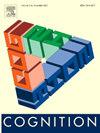Keep flexible – Keep switching! The influence of forced task switching on voluntary task switching
Abstract
Goal directed behavior depends on a dynamic balance between cognitive flexibility and stability. Identifying factors that modulate the balance between these control states is therefore of major interest for the understanding of human action control. In two experiments we used a hybrid paradigm combining forced- and free-choice task switching and measured spontaneous voluntary switch rate (VSR) as an indicator of cognitive flexibility. In Experiment 1 participants were free to choose a given task on 75%, 50%, or 25% of all trials. In the remaining forced-choice trials task repetitions and switches were roughly equally distributed. Results showed that VSR increases with increasing proportion of forced choices. To clarify whether the frequency of forced choices per se or the frequency of forced task switches in particular drives this effect we conducted Experiment 2. In a fully orthogonal between design participants were free to choose a given task on 75% or 25% of all trials with a predetermined switch rate in the remaining forced-choice trials of 75% or 25%, respectively. Results revealed an interaction of both manipulations: The highest VSR was found for the combination of 75% forced-choice trials with 75% forced switch rate, while VSR for 75% forced-choice trials with 25% forced switch rate was still higher than VSRs in both conditions with 25% forced-choice trials. This suggests that a context of frequent forced task switching changes global control parameters towards more flexible behavior.

 求助内容:
求助内容: 应助结果提醒方式:
应助结果提醒方式:


